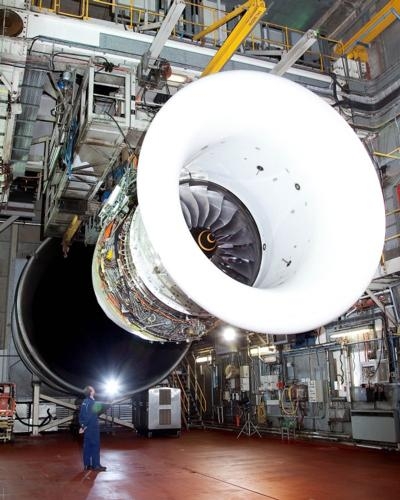Sat, Jul 11, 2020
AD 2020-14-04 Prompted By Occurrences Of In-Service Engine Surges
The FAA is adopting a new airworthiness directive (AD) for all Rolls-Royce Deutschland Ltd. & Co KG (RRD) Trent 1000-A, Trent 1000-AE, Trent 1000-C, Trent 1000-CE, Trent 1000-D, Trent 1000-E, Trent 1000-G, and Trent 1000-H model turbofan engines.

This AD requires removing and replacing one or both affected engines, depending on whether the engine pairing combinations are compliant or non-compliant, as described in the service information. This AD was prompted by occurrences of in-service engine surges on affected RRD Trent model turbofan engines with a high number of intermediate pressure compressor (IPC) module flight hours since new (HSN) or cycles since new (CSN). The FAA is issuing this AD to address the unsafe condition on these products. This AD is effective July 23, 2020.
Supplementary Information: The European Union Aviation Safety Agency (EASA), which is the Technical Agent for the Member States of the European Community, has issued EASA AD 2020-0010R2, dated March 4, 2020 (referred to after this as “the MCAI”), to address an unsafe condition for the specified products.
The MCAI states:
- Occurrences have been reported of engine surges on certain Trent 1000 engines, particularly those that have accumulated a high number of flight hours (FH) and engine flight cycles (EFC). The investigation into the cause(s) of these events is ongoing. This condition, if not corrected, could lead to a dual engine surge, possibly resulting in a dual engine in-flight shut-down and consequent reduced control of the aeroplane.
- To address this potential unsafe condition, Rolls-Royce published the NMSB to provide de-pairing instructions, reducing the risk of a dual surge event. Instructions for in-shop performance recovery are being developed. Prompted by some errors detected in Table 1 of the NMSB, Appendix 1 of this [EASA] AD must be used instead. RollsRoyce will revise the NMSB to correct those errors.
- For the reasons described above, EASA issued AD 2020-0010 (later revised) to require de-pairing of the affected engines.
- Since EASA AD 2020-0010R1 was issued, Rolls-Royce issued NMSB TRENT 1000 72-K494, providing instructions for in-shop action to restore the surge margin.
- Embodiment of Part B of this NMSB allows relaxation of the de-pairing actions as required by this [EASA] AD. Rolls-Royce have revised NMSB TRENT 1000 72-AK468 accordingly, including a new Table 1, defining de-pairing upper and lower thresholds (pre- and post-NMSB 72-K494 embodied) and Table 2 (which was Table 1 in the NMSB 72-AK468 at original issue) for de-pairing when one engine has embodied Part B of NMSB TRENT 1000 72-K494, and when both engines have embodied Part B of NMSB TRENT 1000 72-K494.
- Consequently, this [EASA] AD is revised to include references to NMSB TRENT 1000 72-K494 and to NMSB TRENT 1000 72-AK468 Revision 1, and Table 2 thereof.
More News
Aero Linx: Model Aeronautical Association of Australia MAAA clubs are about fun flying, camaraderie and community. For over 75 years, the MAAA has been Australia’s largest fl>[...]
Touchdown Zone Lighting Two rows of transverse light bars located symmetrically about the runway centerline normally at 100 foot intervals. The basic system extends 3,000 feet alon>[...]
“Discovery and innovation are central to our mission at Virgin Galactic. We’re excited to build on our successful record of facilitating scientific experiments in subor>[...]
How To Get A Story On Aero-TV News/Feature Programming How do I submit a story idea or lead to Aero-TV? If you would like to submit a story idea or lead, please contact Jim Campbel>[...]
Student Pilot Reported That During Rotation, “All Of A Sudden The Back Of The Plane Kicked To The Right..." Analysis: The student pilot reported that during rotation, “>[...]
 ANN's Daily Aero-Linx (05.02.24)
ANN's Daily Aero-Linx (05.02.24) ANN's Daily Aero-Term (05.02.24): Touchdown Zone Lighting
ANN's Daily Aero-Term (05.02.24): Touchdown Zone Lighting Aero-News: Quote of the Day (05.02.24)
Aero-News: Quote of the Day (05.02.24) ANN FAQ: Contributing To Aero-TV
ANN FAQ: Contributing To Aero-TV NTSB Final Report: Cirrus Design Corp SR20
NTSB Final Report: Cirrus Design Corp SR20



